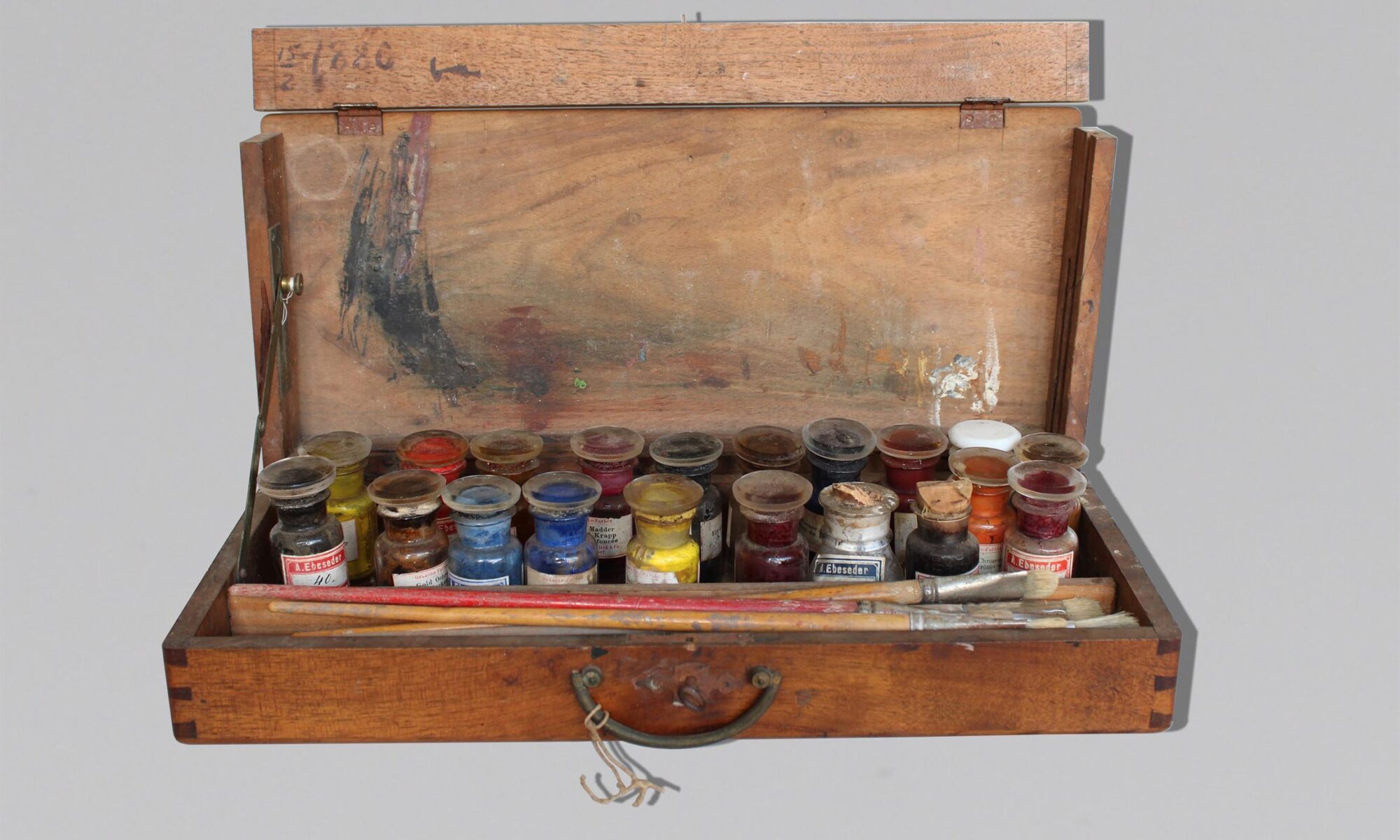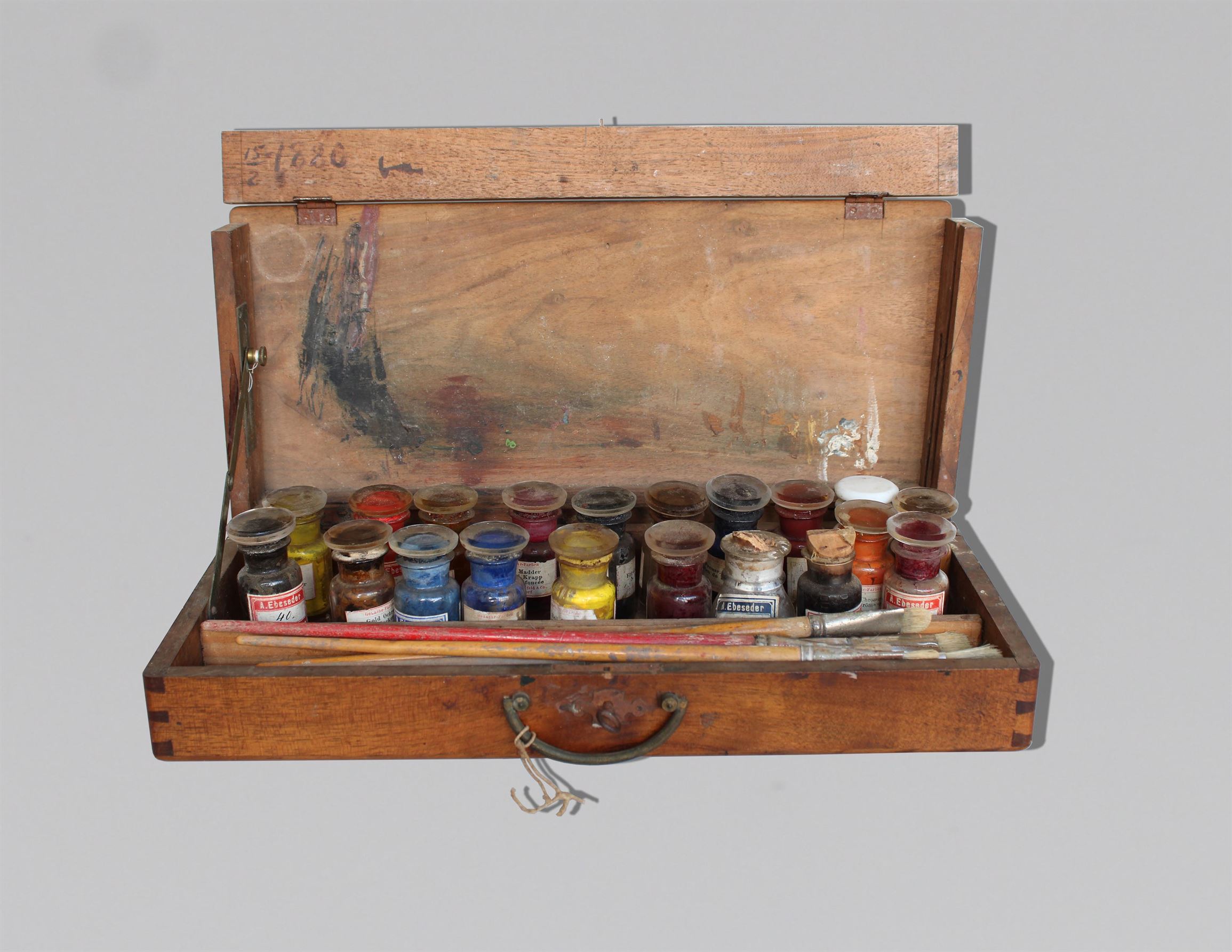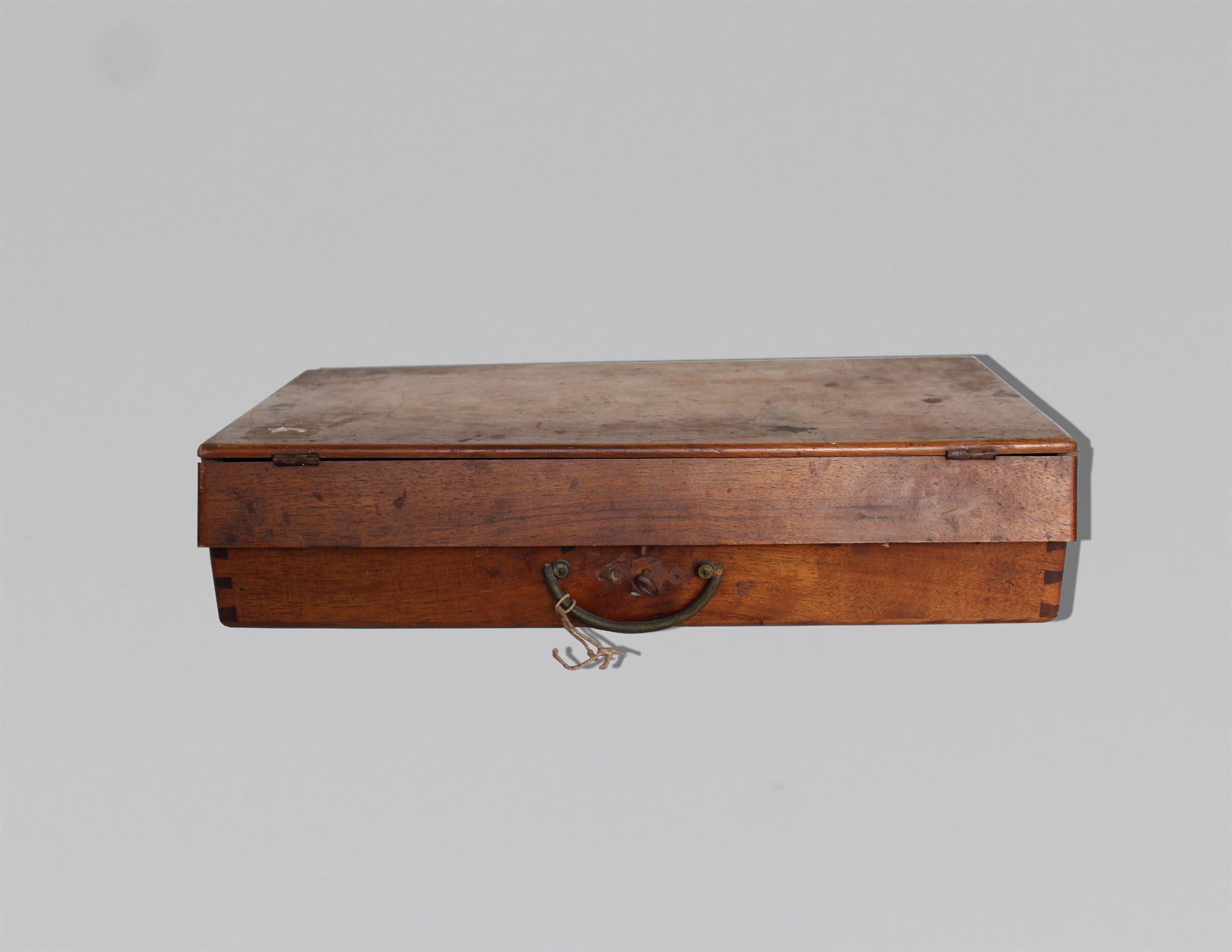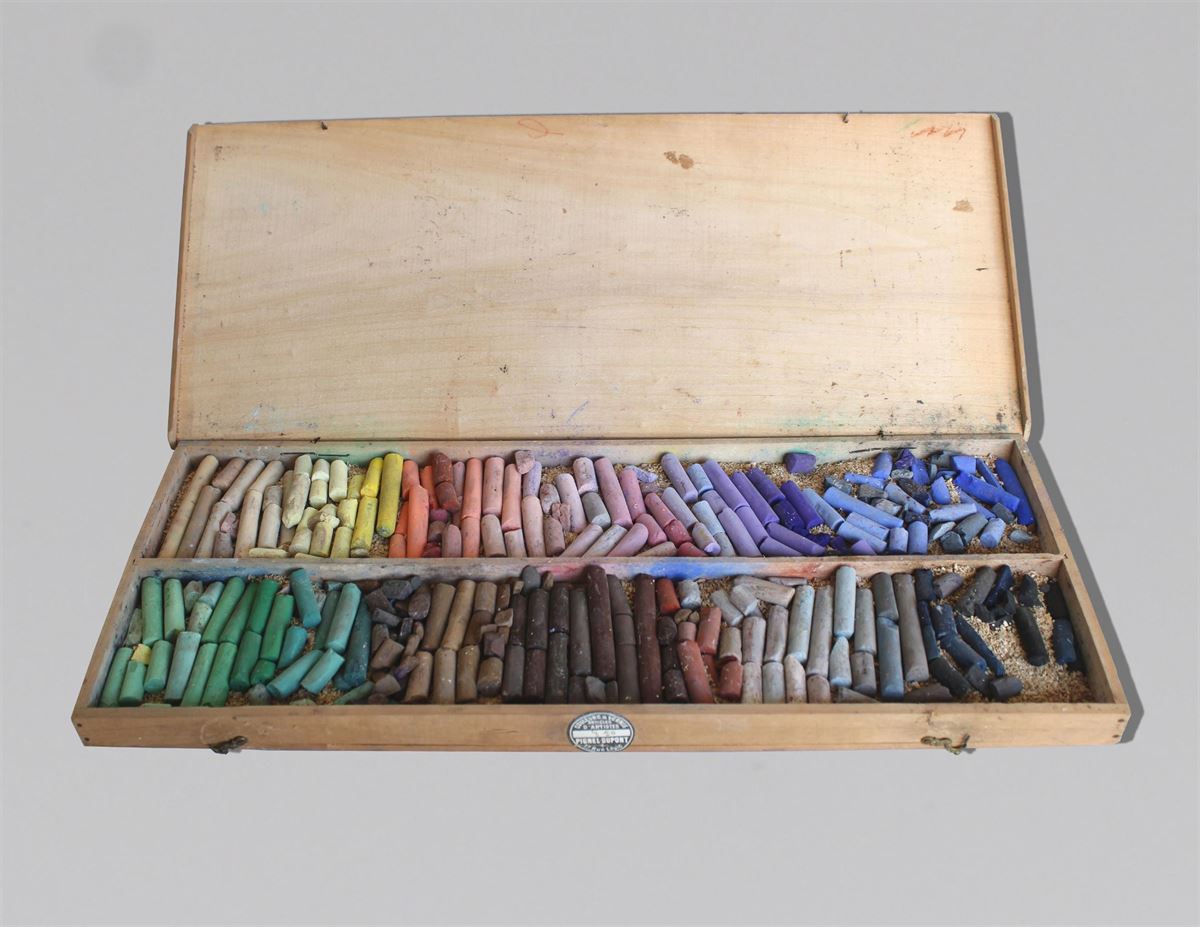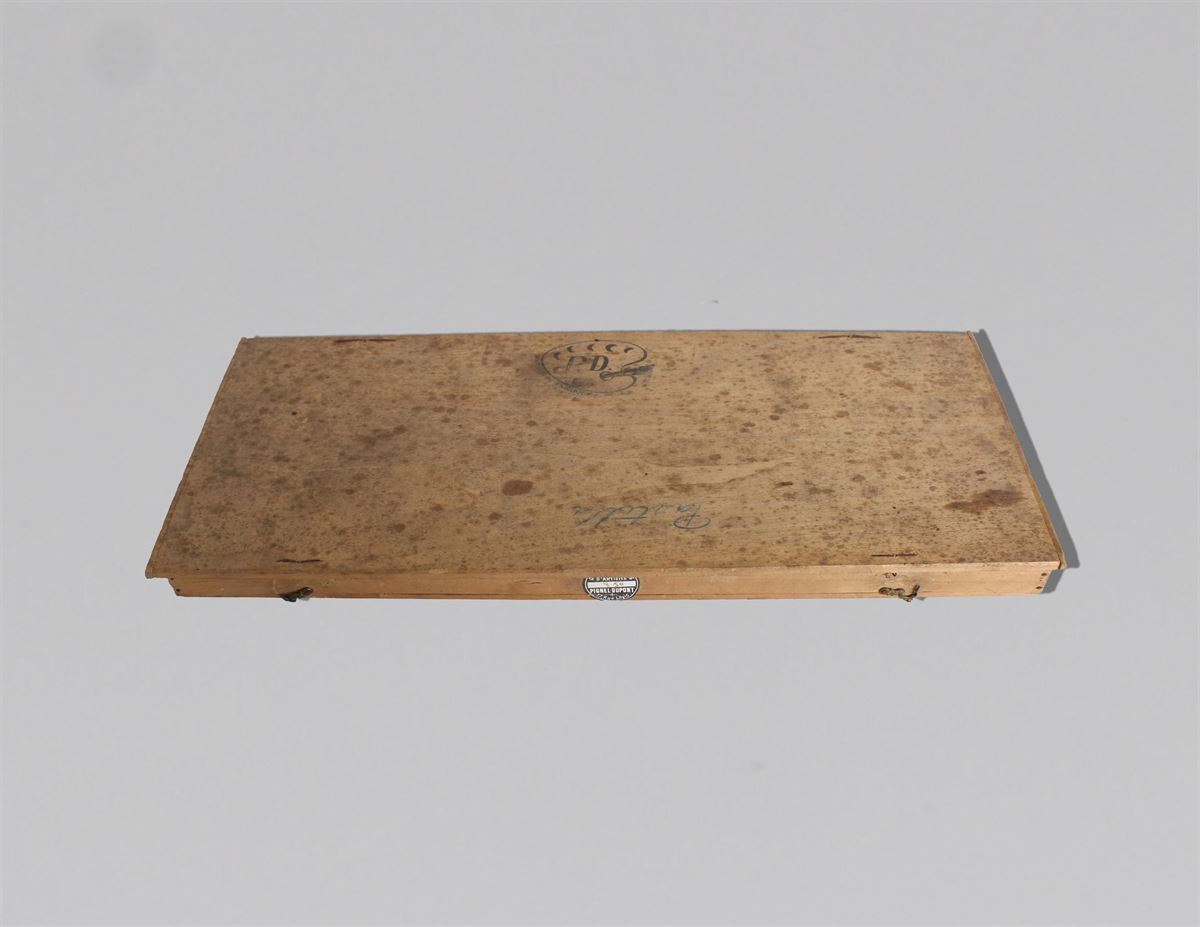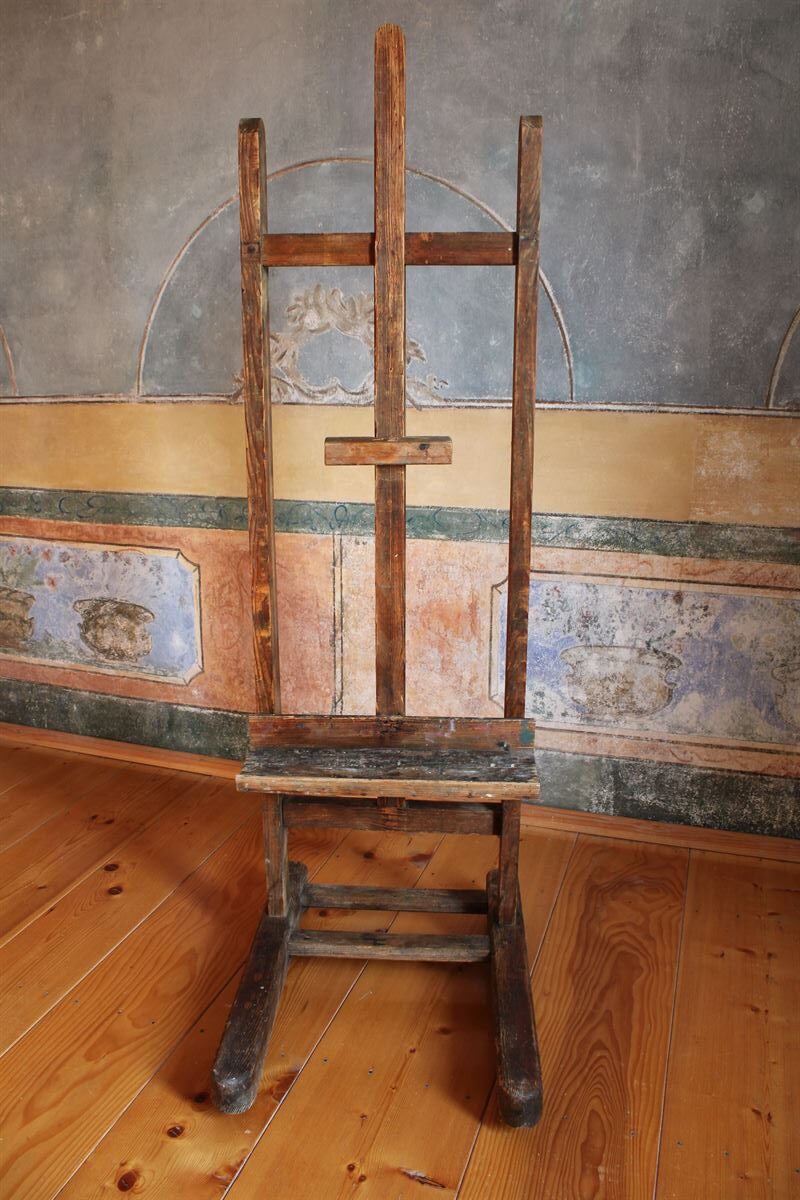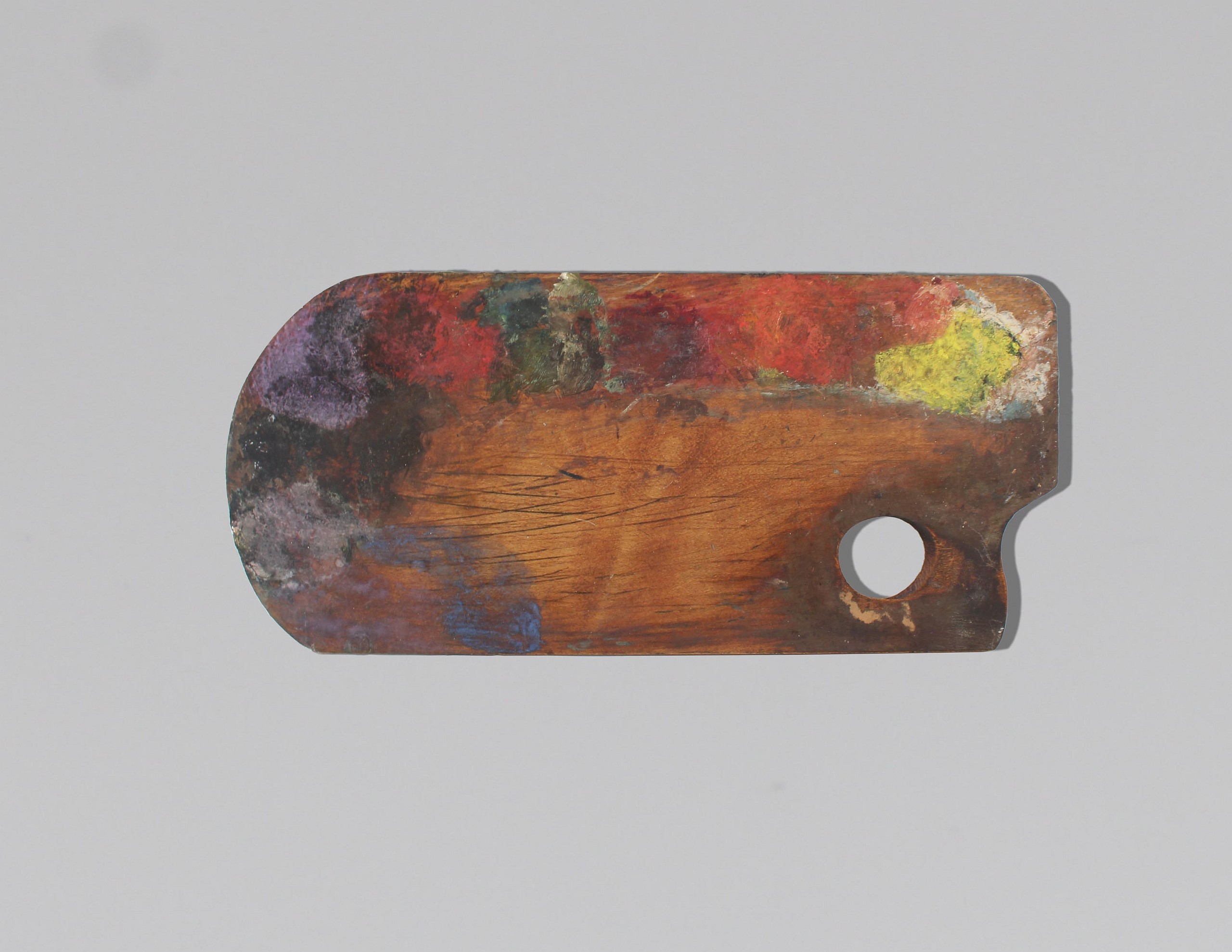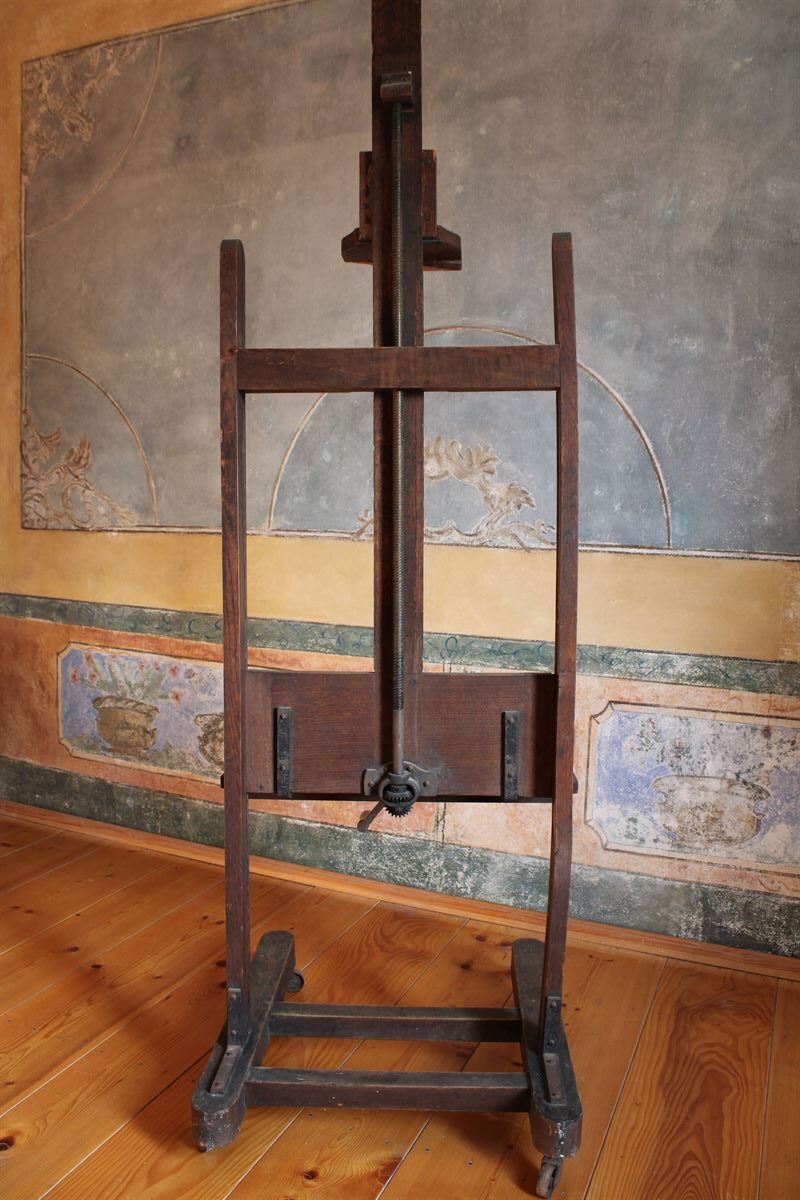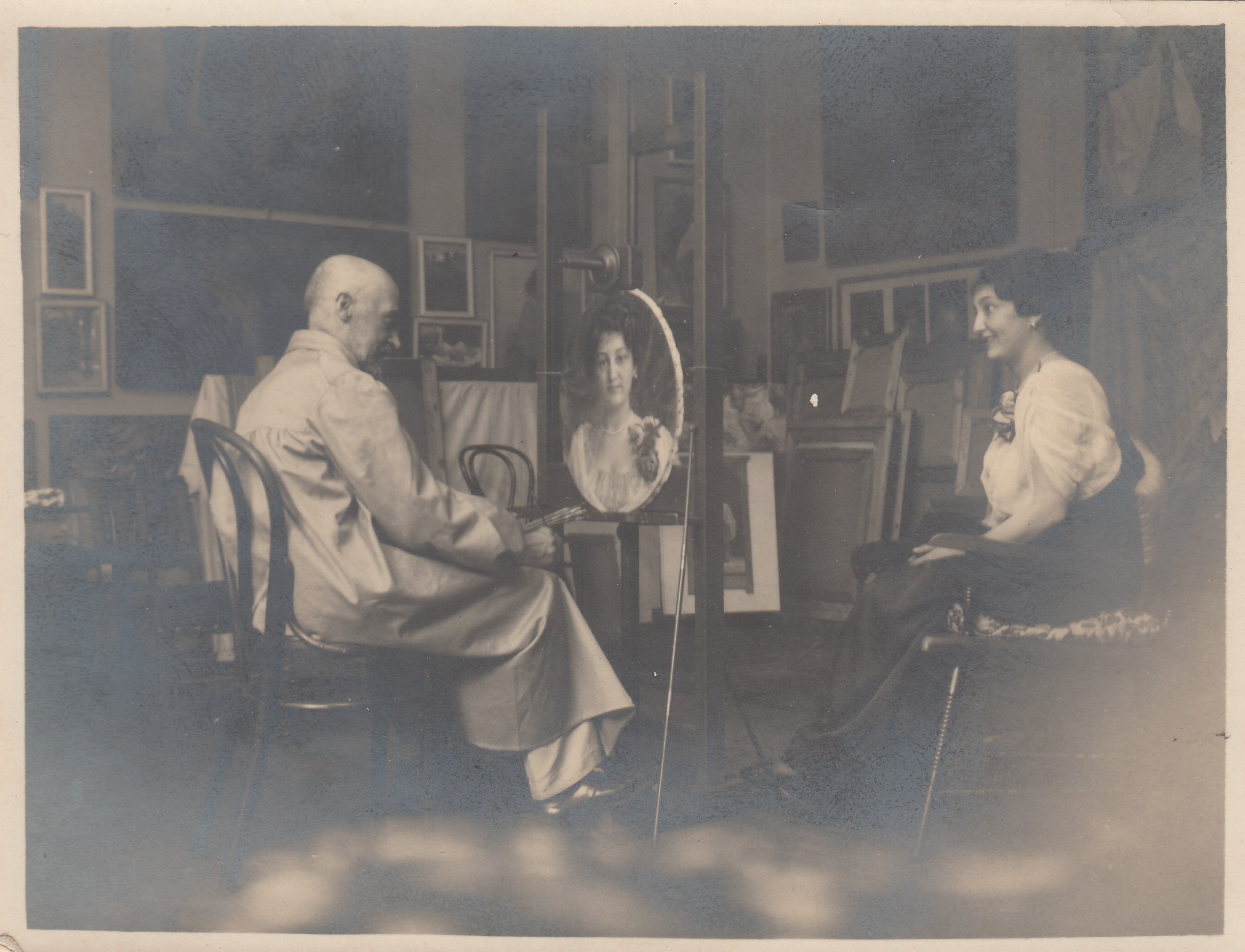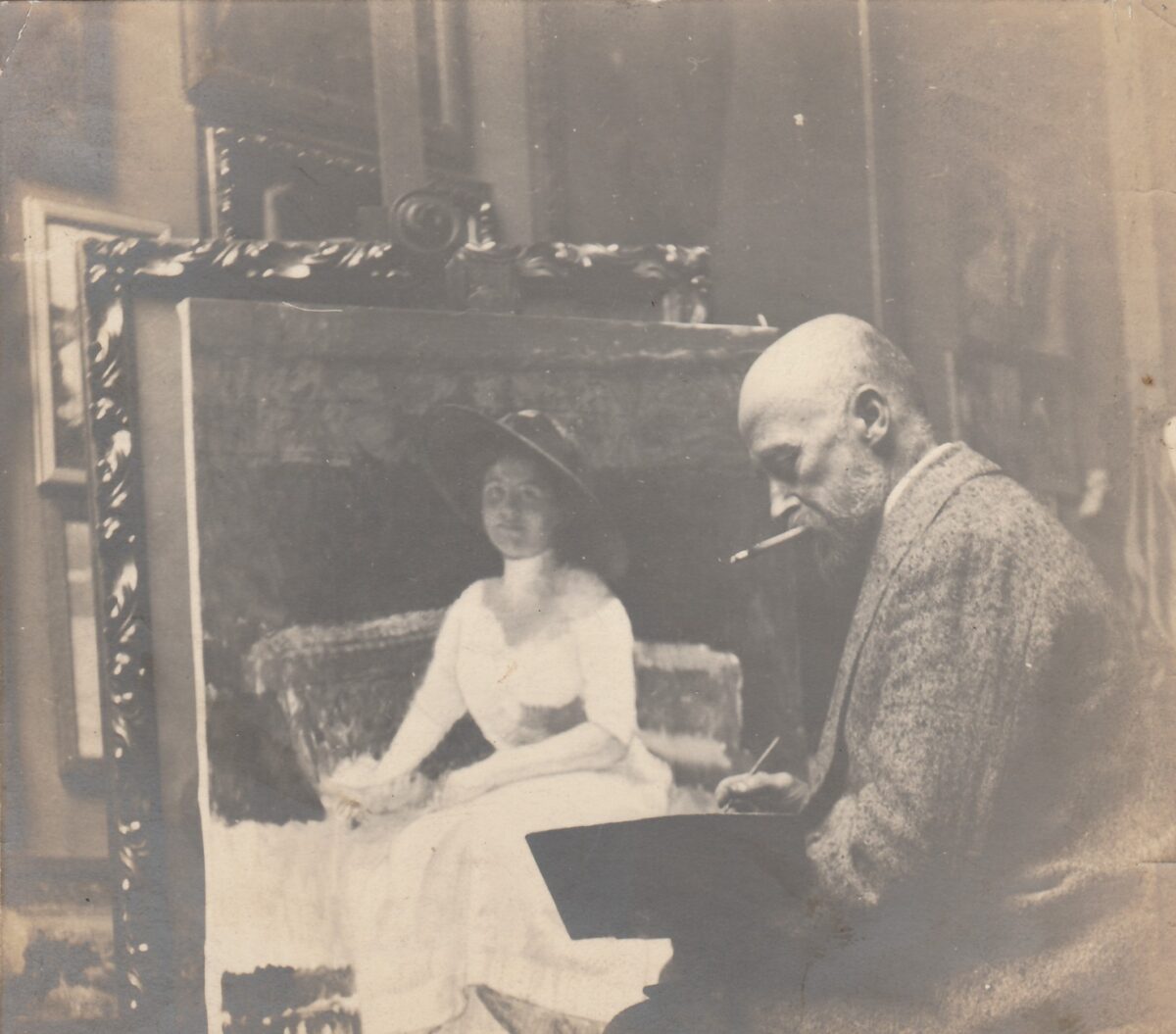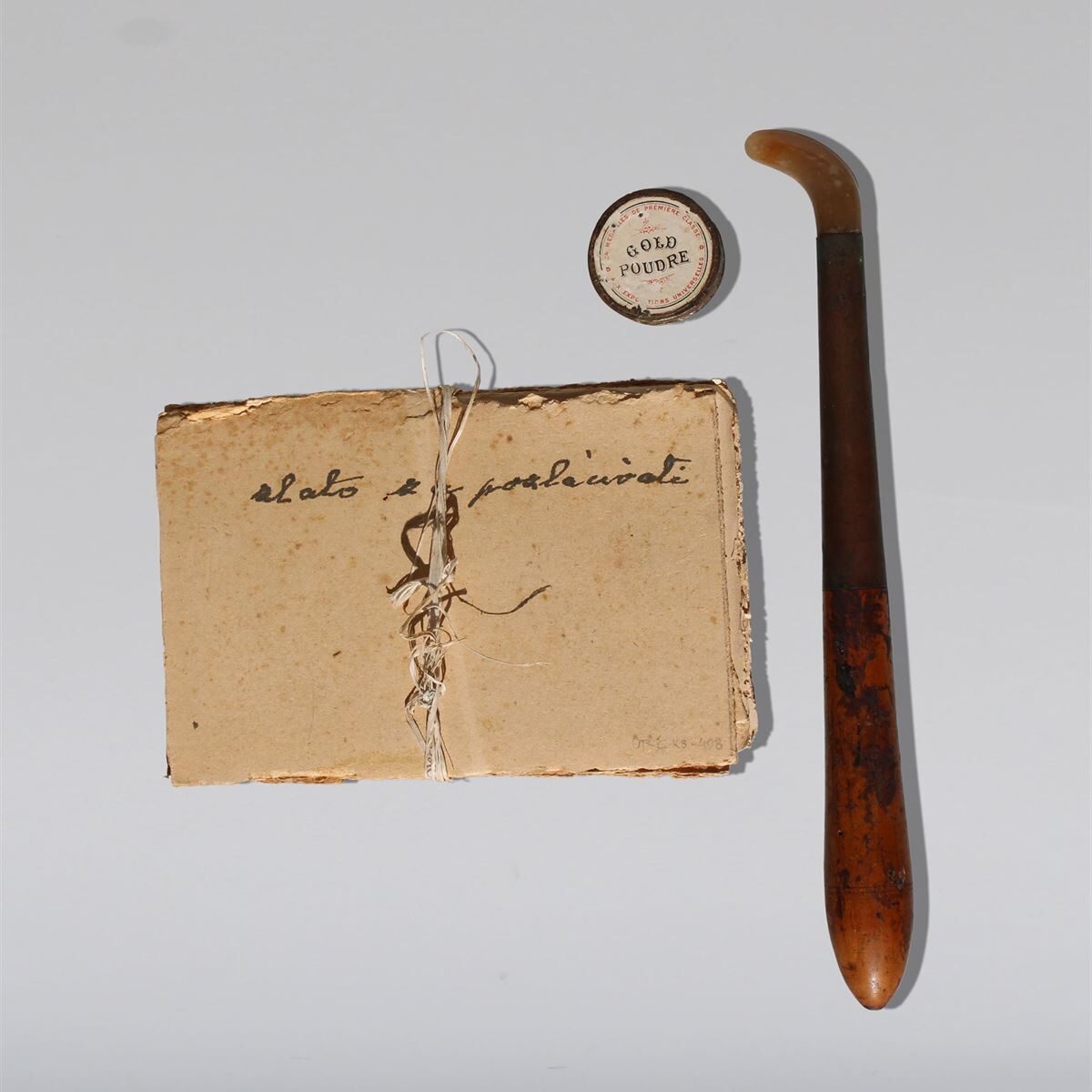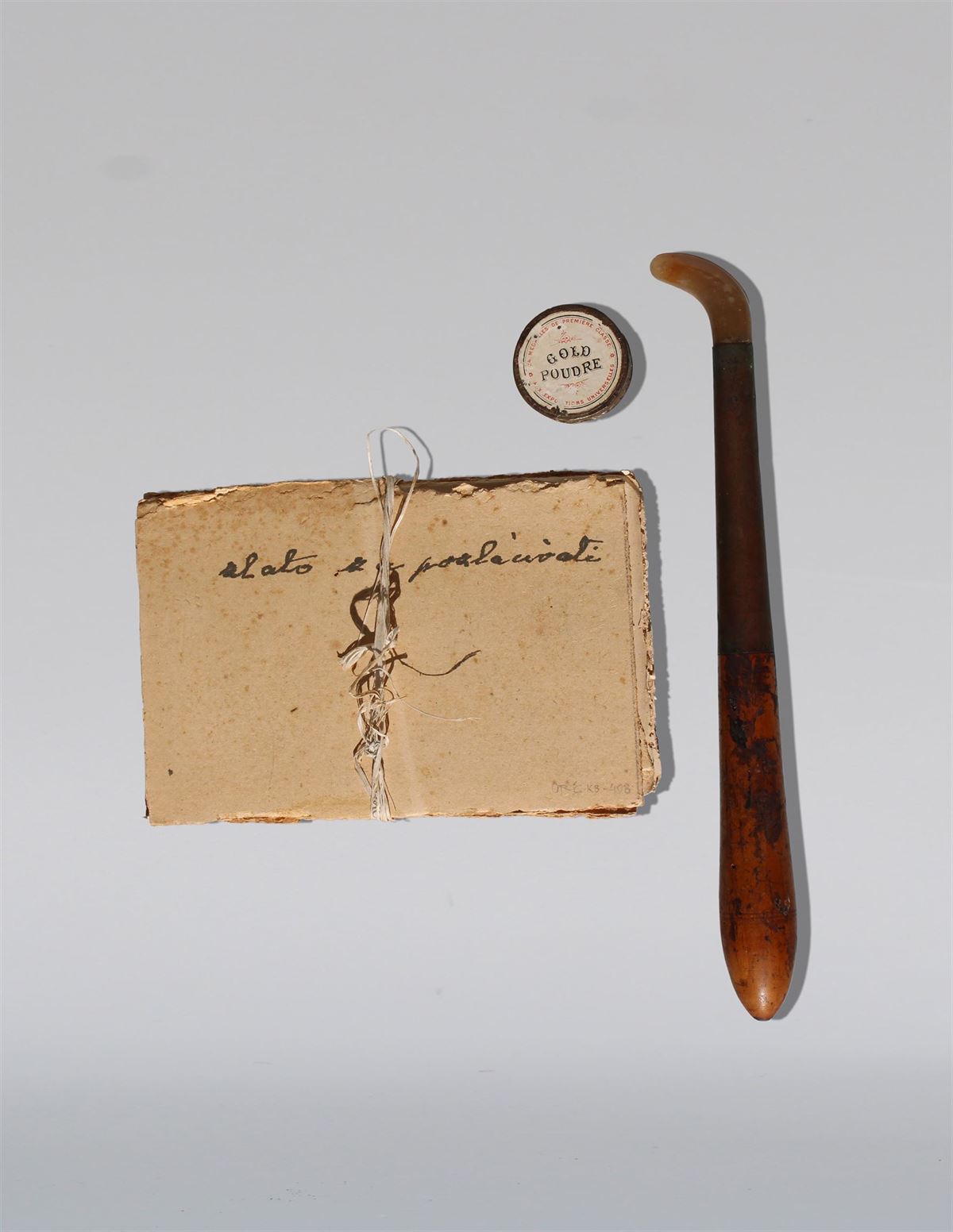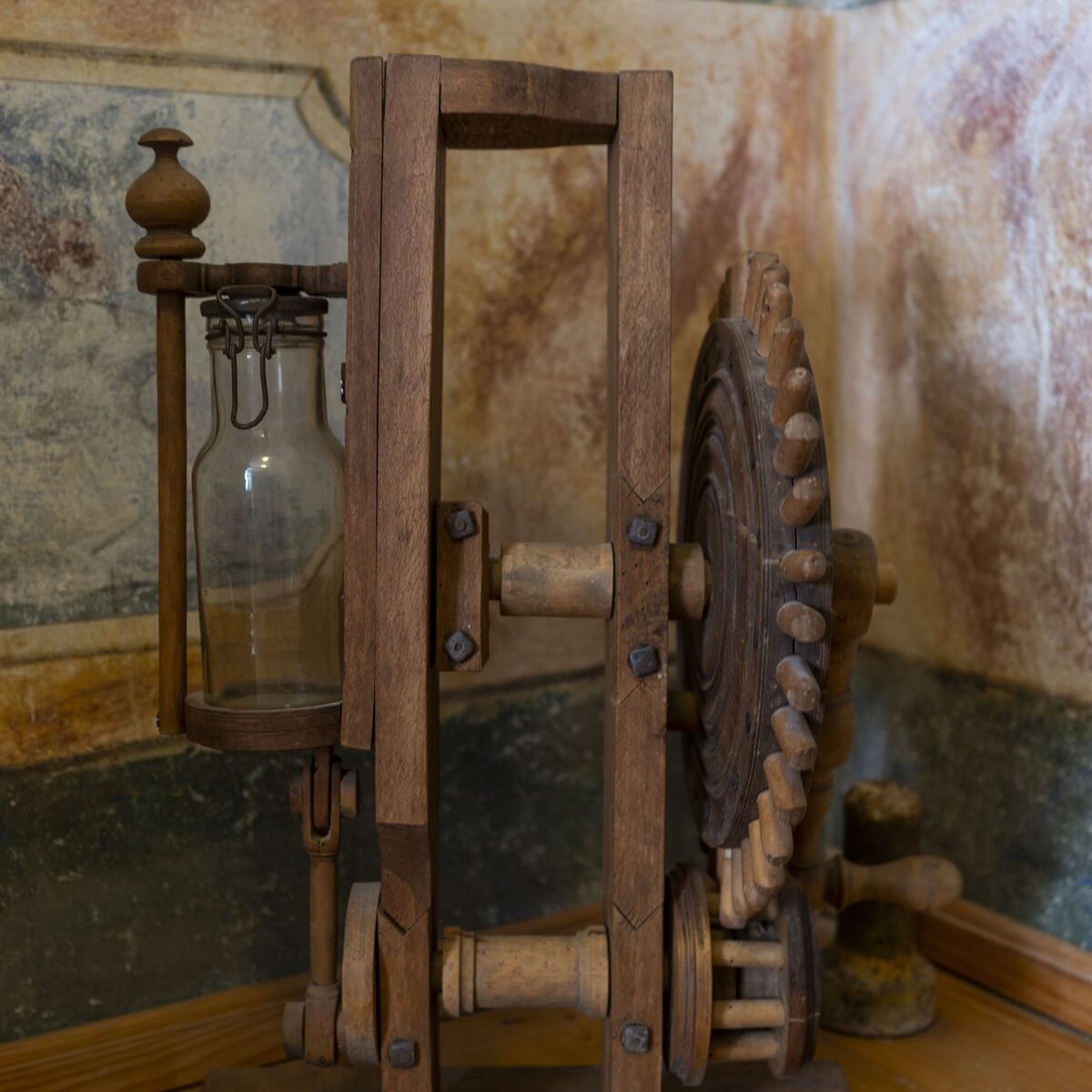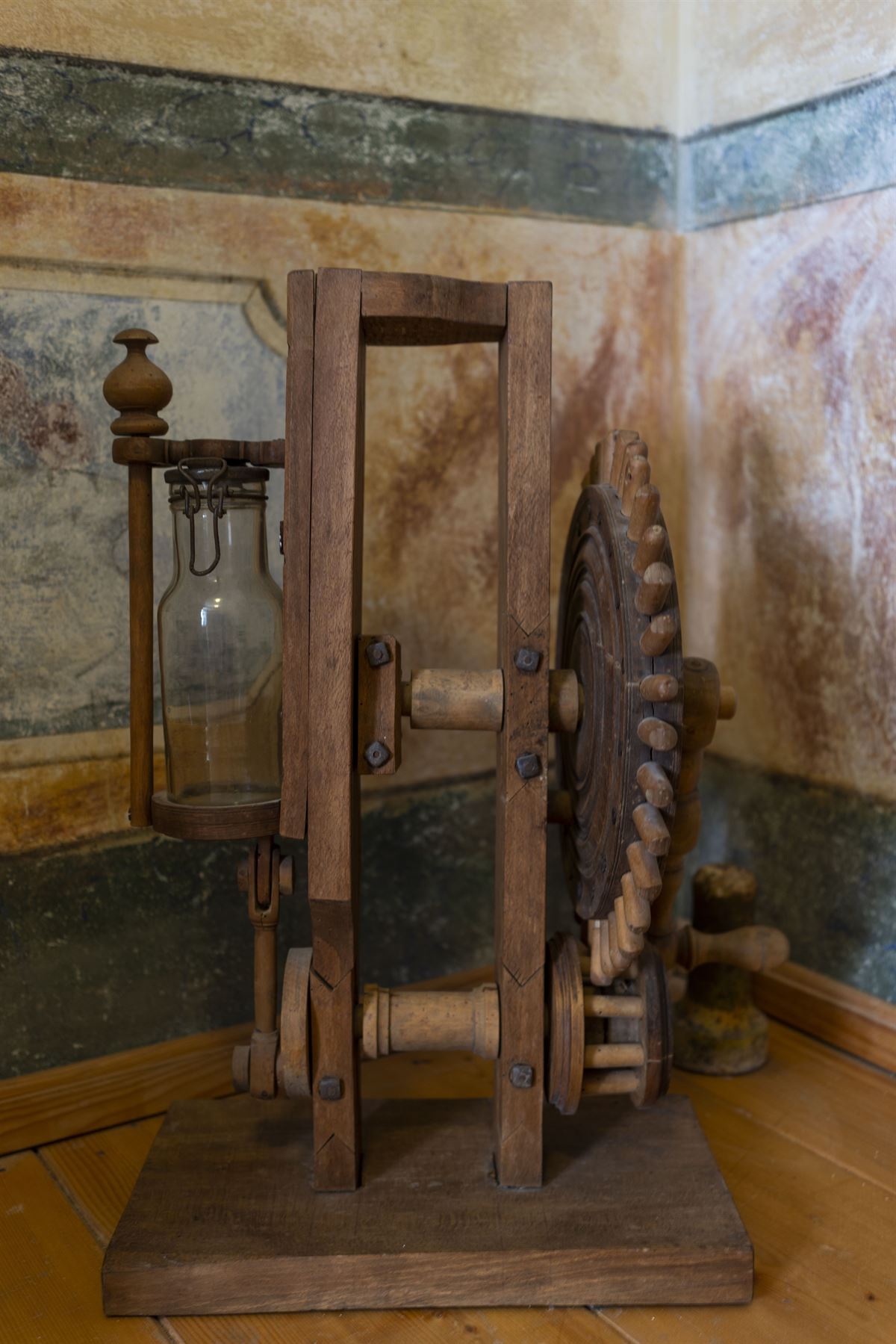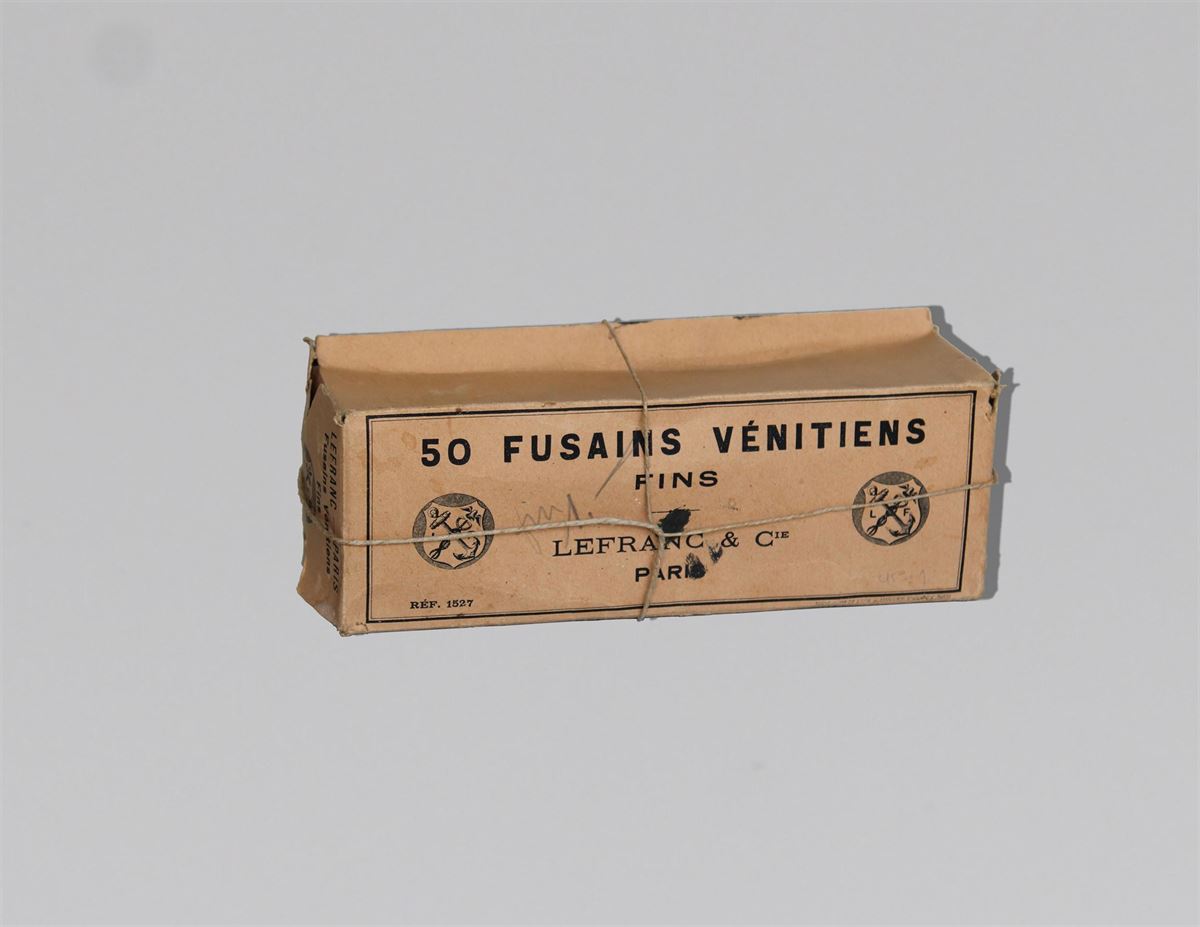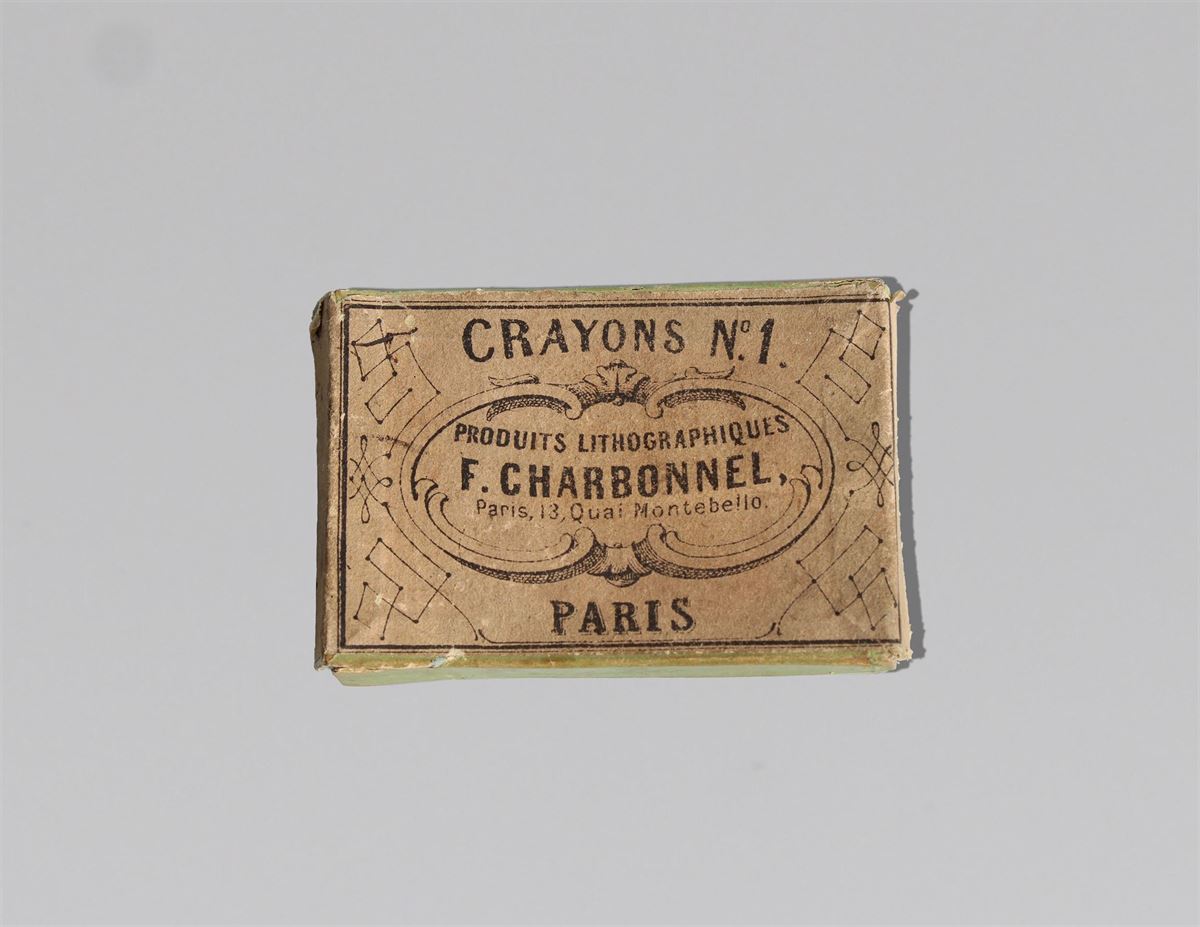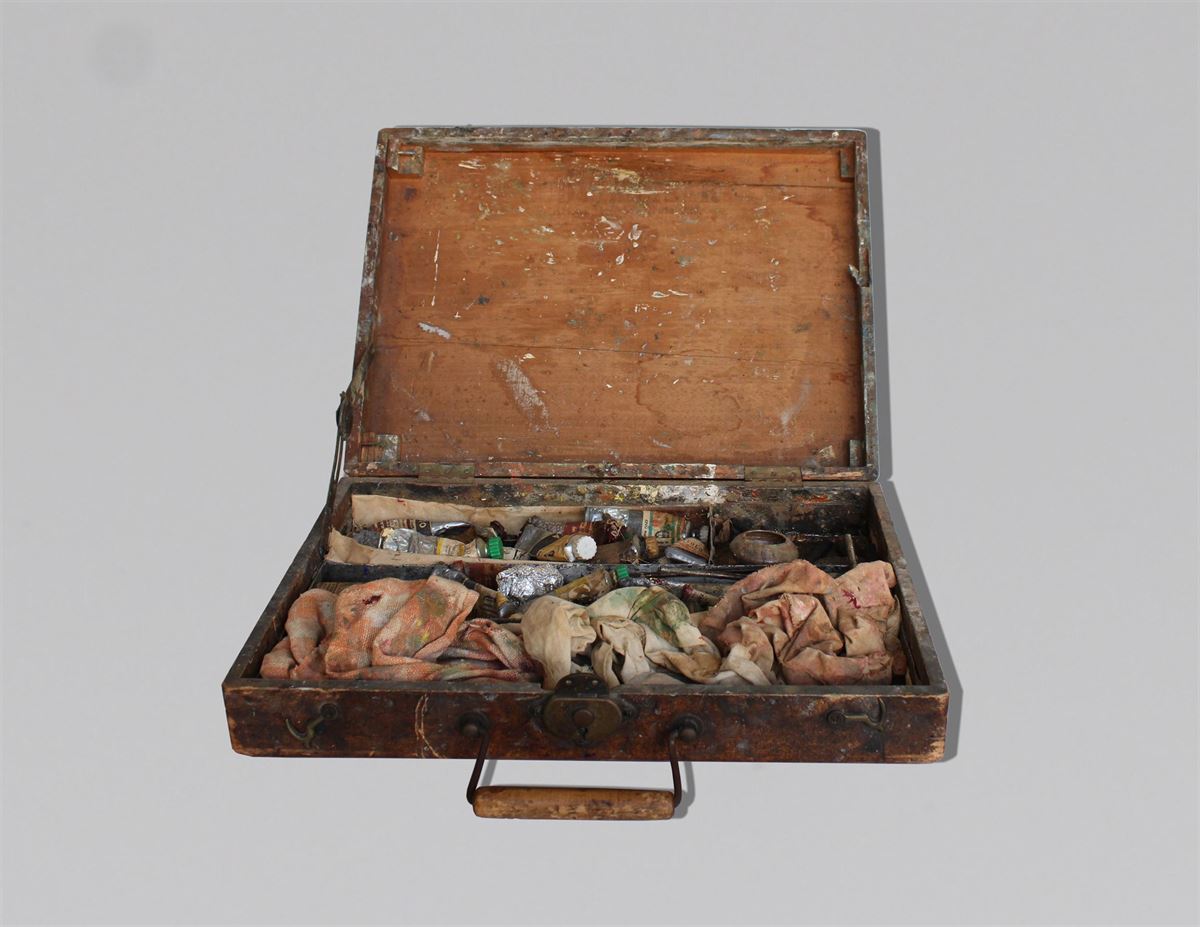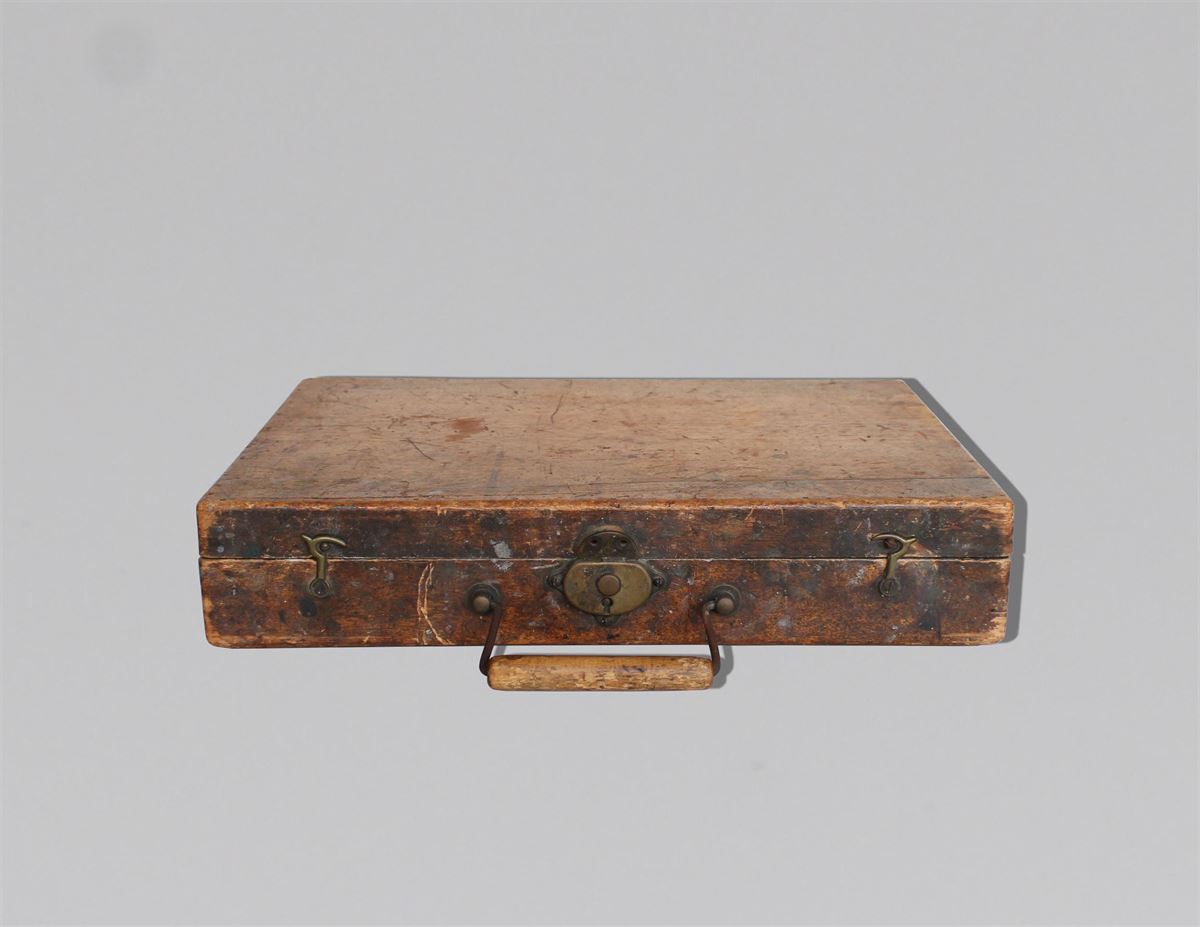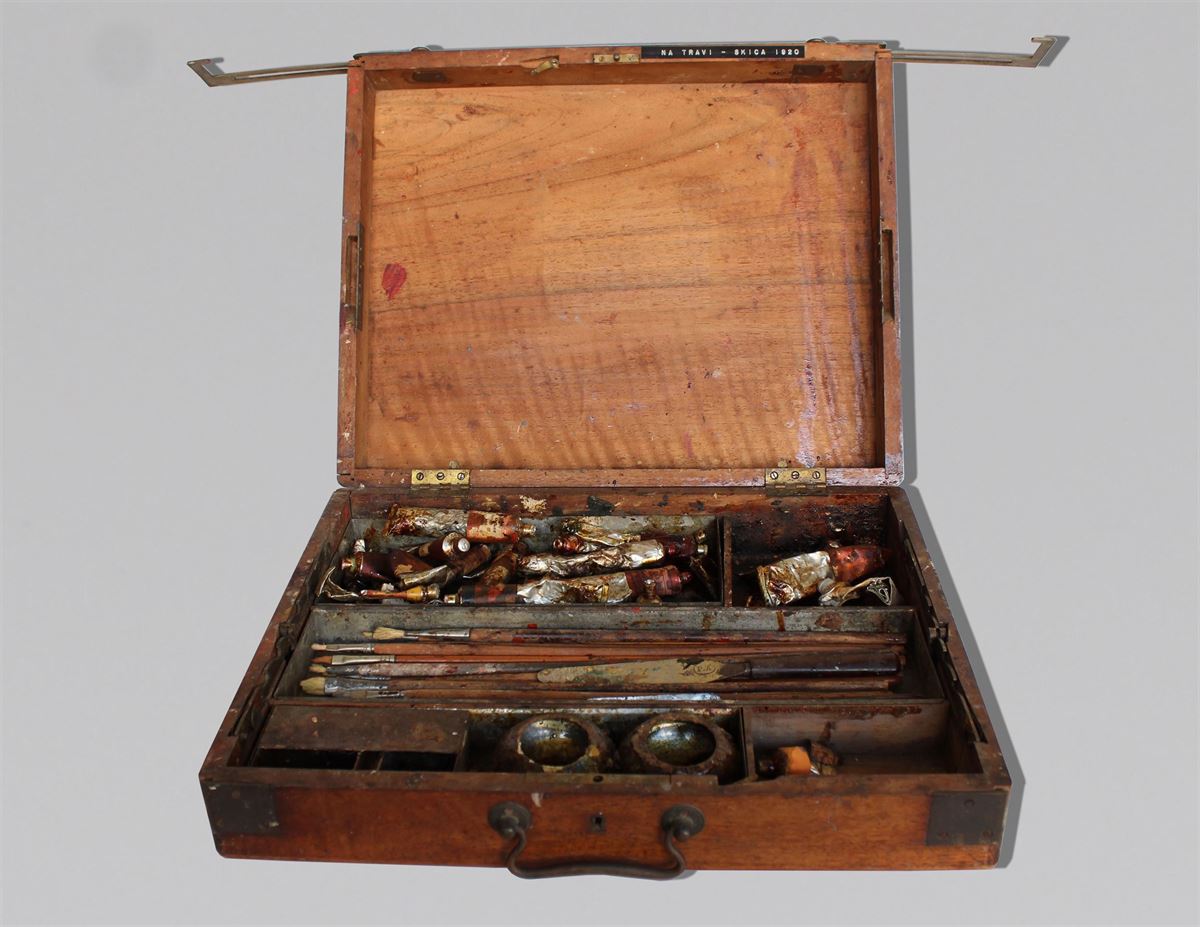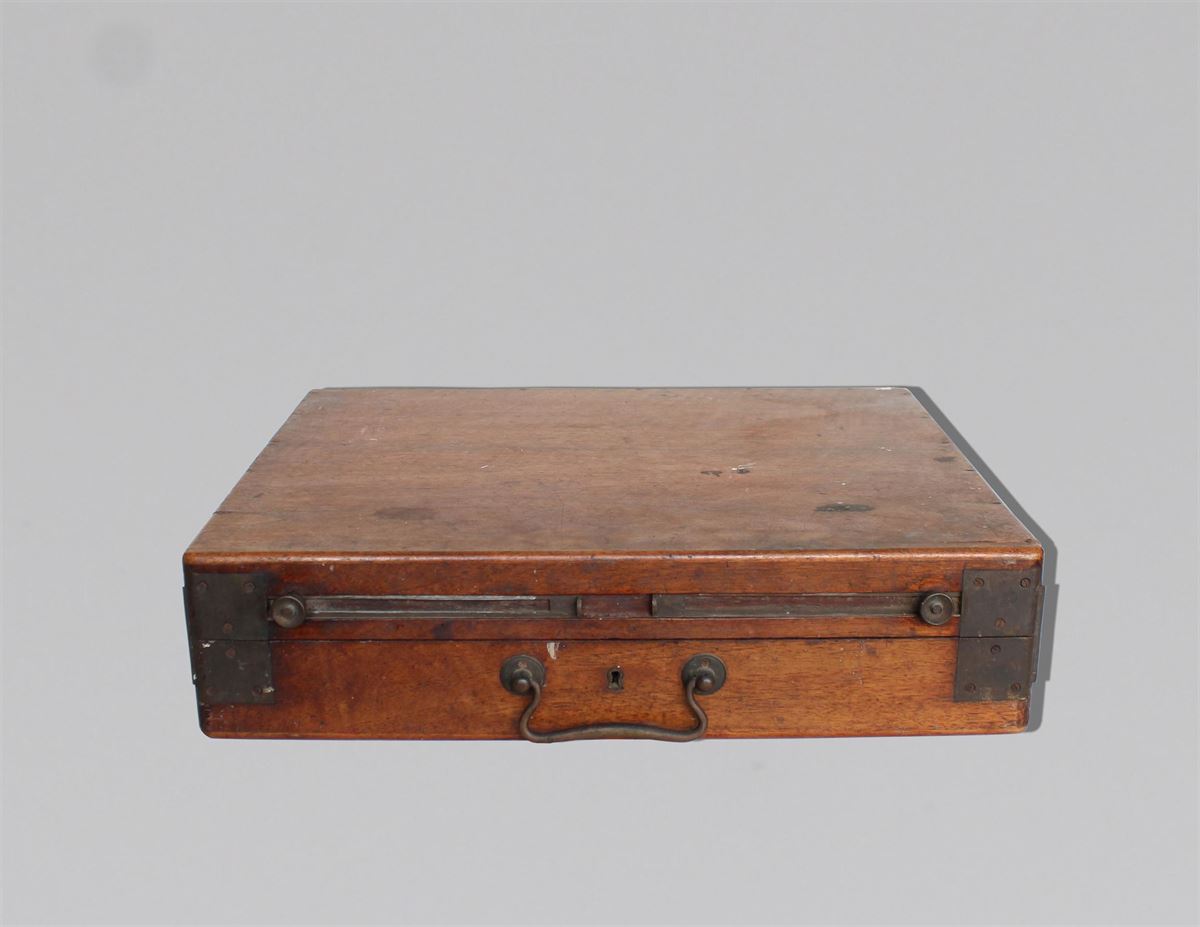tablica
| Inventory number: KB-117/1-23 |
| Material: wood, metal |
| Dimensions: 8.5 x 28 x 16.3 cm |
| Dating: second half of the 19th century |
| Origin: France |
središnji sadržaj
The wooden box shaped like a trunk with a metal handle, a lock, and a key. The interior is divided by a wooden partition into a smaller space for brushes and a larger one for paints. Inside the box, there are 20 glass bottles for gouache and 17 brushes, along with one painting spatula. On the inner side of the wooden lid, 15/2 1880 is handwritten.
Except for one glass bottle, all bear the inscription of the manufacturer, SCHOENFELD DUSSELDORF. The dimensions of 19 glass bottles are identical, measuring 6.7 cm in height with a diameter of 2.9 cm. SCHOENFELD DUSSELDORF is a renowned German manufacturer specialised in artist materials founded by Franz Hermann Jozef Schoenfeld (1834 - 1911). On one side of the bottle, there is a red-and-white paper label displaying details of a leading company in Vienna engaged in selling artist materials since 1879. The address, A. Ebeseder Wien, I. Opernring 9, is inscribed, and a number is handwritten, presumably indicating the product’s price. On the other side of the bottle, there is also a paper label with the manufacturer’s mark, the art medium – gouache, and pigment, all written in German and French.
On the belly of one bottle, which differs in dimensions from the others, the inscription CHEVILLET PARIS is stamped. This bottle contains white gouache paint. It was also acquired in Vienna as indicated by the inscription A. Ebeseder on the other side. The dimensions are as follows: height 7.5 cm, width 4.5 cm, and the base is 3.2 cm.
There are 20 pigments in the box: Carmine Lake, Carmine, Deep Madder (dark red), light vermilion, orange chrome, light yellow chrome, light cadmium yellow, raw sienna, golden ochre, brown ochre, Prussian blue x2, cobalt blue, mineral blue, and zinc white. Alongside these paints, there is also a bottle of megilp, a medium used for painting in watercolours or on silk. Megilp is a mixture of mastic, which is a resin from the Mediterranean tree Pistacia lentiscus var. Chia, and oils, which can be linseed, walnut, etc.
Additionally, the box contains 17 brushes for oil paints and one palette knife. Only one brush bears a mark: 20 squirrel MADE IN CHINA, indicating it was made in China from squirrel hair.


